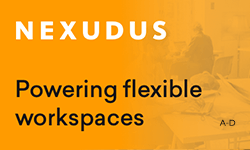A quarter of all coworking spaces operates profitably in the latter part of the first year.
In the opening month, the average coworking space has 16 members and 40 desks. This number grows to 54 members and 67 desks within the second half of the first year. That means, at the start, there are 0.6** members for every desk. Between the sixth and twelth month, this number only slightly increases to 0.8**. At least a quarter of all coworking spaces is already profitable at this time. For the spaces with over 50 members, this number is even at 44%.
Joint ventures with landlords are becoming more popular.
Only two thirds of all new coworking spaces are renting their location. On the other hand, they are more often running a joint venture with the landlord (11%) or are operating their coworking spaces through a management contract (5%). Around one sixth of all coworking spaces own their locations themselves – roughly the same as with the older generation. Every third new coworking space with 100 or more desks is buying the future location upfront.
The smaller the space and the city, the shorter the rental contracts
Coworking spaces that are renting their facilities prefer shorter rental contracts at the start – or they don’t receive long contracts. At any rate, the average rental duration is significantly below five years, which is lower than with older generations. Especially small coworking spaces with fewer than 50 desks are bringing down the average. They are often located in small cities and usually only sign rental contracts for around three years. In case of new coworking spaces with 100 and more desks on the other hand, the average is almost ten years.
Most of new coworking spaces mainly install open working areas in their rooms (45%). Together with lounge and coffee space, more than half of the areas are open to all members. The share of private offices is only at 18% and only increases significantly when spaces are older.
The bigger the coworking space, the more private offices they offer
Depending on their size, new coworking spaces show a lot of differences. If they offer 100 or more desks, private offices take up around 40% of the total space, with open work spaces only accounting for a quarter. The revenue streams in the first year look similar. Small coworking spaces (with fewer than 50 desks) make half of their income from the pure rental of their desks. With increasing size, this share decreases in favor of revenue from private offices.
New coworking spaces are spending slightly more than a third of their revenue on rent. If coworking spaces without rental contracts are excluded, this share increases to 42%. Together with the operating costs, they are therefore spending 57% for the location costs alone.
As large coworking spaces have a lot more staff, the relative rent costs go down, but the costs for staff increase appropriately. In addition, the owners of such spaces reward themselves with a higher share for their salary.
In total, new coworking spaces have an average of 4 employees, including the owner(s), provided they also work for the coworking space. For spaces with fewer than 50 desks, the number is roughly three, for bigger spaces it is around six. With the latter, more employees are working at the spaces full time.
And who operates the new coworking spaces?
Their owners or independent operators have an average age of 39 years. 70% of them are male and 85% have at least a bachelor’s degree. Their employees are slightly younger and have an average age of 35 years. 65% of them are female and 76% have at least a bachelor’s.
However, owners of larger coworking spaces choose employees that are significantly younger than themselves, while in smaller coworking spaces, the operators and employees have almost the same ages. The bigger a coworking space, the more likely that it is run by men, who in turn are more likely to choose male employees in the subordinate positions.
As always, you can download the general statistics in a PDF here for free. A significantly more elaborate report with grouped analyses, e.g. based on area size or size of location, is available to those that have made financial contributions to the Global Coworking Survey. Please visit coworkingstatistics.com for this booklet.
:::
*All averages of open numeric scales are based on the 5% trimmed mean, which excludes the top and bottom 5% of the values. By using this approach, we are trying to exclude extreme values as well as typosssssss. The charts also display the arithmetic mean and the median in those cases.
**To do so, we calculate the proportion of members to desks for each coworking space – and calculate the 5% trimmed mean.
:::
▶︎ Background and more articles of the 2018 Global Coworking Survey
The 2018 Global Coworking Survey is officially supported by the following organizations:
Main Supporters:
Essensys - A management tool for coworking spaces
Nexudus Spaces - A management tool for coworking spaces
WUN Systems- A management tool for coworking spaces
Distribution partners:
Social Workplaces - An event organizer and consulting agency for coworking spaces
Coworker.com - A platform to find and book coworking spaces








